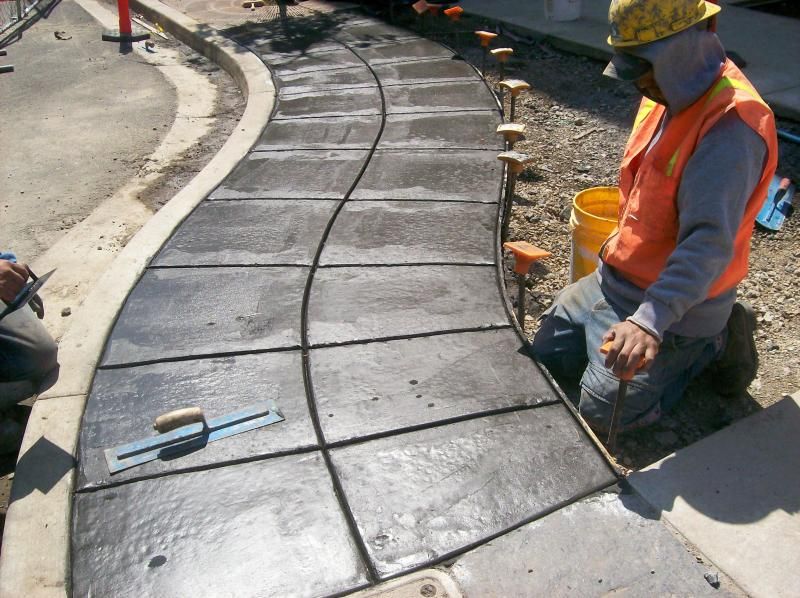A variety of concrete services are available to repair cracks and seal deteriorated surfaces. Moisture in the air causes concrete to absorb water during rain and thaw. This happens because concrete without air-entraining additives cannot easily evaporate moisture. Over time, water becomes trapped under the concrete and expands, causing cracks and holes. Depending on the severity of damage, different solutions are available. The following are just some examples of concrete services.
Concrete paving
Using concrete services for paving can improve your property’s appearance. It is crucial to have a smooth surface, as uneven surfaces are hazardous to traffic and can lead to costly repairs. A professional company can provide you with a smooth surface that’s safe for walking and rolling. Once the preparation work is completed, concrete contractors will begin the paving. The following are some important pre-installation steps. Having an experienced contractor complete the paving process is essential.
Paving for industrial facilities requires high-grade concrete for safety, stability, and aesthetic appeal. This is essential for a facility’s parking lot, which sees heavy traffic during the weekend. Concrete is also more ADA-compliant than other paving options. For these reasons, companies that provide concrete services for paving for businesses have an edge in this competitive market. They can also offer competitive quotes, which will give you peace of mind when it comes to a large paving project.
Concrete finishing
A concrete finisher can be a valuable asset in the construction industry. The finishing process begins with the jointing of the concrete slab and is accompanied by flotation. This process entails the use of float blades to embed aggregate particles beneath the surface. It also removes humps and voids. Flotation also helps compact the mortar at the surface. After floating, steel troweling should be applied to create a level surface. Floating alone is not sufficient as a finish procedure and requires more work. For a slip-resistant surface, the concrete should be sufficiently hard.
There are several types of finishes available for concrete slabs. Some require only a simple strikeoff, while others require a screed or broomed finish. Some require a combination of these techniques. This can be a challenging process that requires expertise and patience. Luckily, there are plenty of professionals who can help. Here are some common methods of concrete finishing:
Concrete admixtures
The use of admixtures in concrete services can improve the quality of concrete by solving problems associated with its set time and properties. While concrete admixtures are commonly used in residential construction, they can also contribute to certain defects if they are not used properly. Calcium chloride admixtures, for instance, increase drying shrinkage, which can result in cracking. It is therefore important for inspectors to have knowledge of the various types of admixtures and how they are used to improve concrete quality.
These admixtures can also increase the compressive strength of the concrete, which is critical in construction projects. Concrete with too high a water/cement ratio will crack or crumble. To solve this problem, a company can use a heat-reducing admixture. These admixtures are compatible with most concrete admixtures, but the amount of entrained air will reduce the strength of the concrete by five percent. They can also reduce the water content of the concrete, which will result in lower carbon footprint and energy use per volume.
Concrete slump test
A concrete slump test measures the workability of freshly-mixed concrete before it sets. This method is done to determine whether the batch has been properly mixed. When the concrete is able to flow easily, the result indicates that it has been properly mixed. When it doesn’t flow easily, however, it’s time to call in a professional. Learn how to perform the test yourself. Here are some tips:
First, you must understand the purpose of the test. It’s important to understand how slump values are calculated and why they are important. Different classes of concrete have varying target slump values. This will help you determine if your concrete is appropriate for a specific application. If it’s not, then you’ll have to amend it, remix it, or replace it altogether. Luckily, the slump test is relatively inexpensive and easy to do.
Concrete resurfacing
Concrete resurfacing is an option to improve the look of your home. If you’d like a new look, you can buy concrete that comes in different colors and hues, or paint the existing surface. It’s best to choose a color that complements the existing concrete, or try adding a stone stamp to give your floor a unique texture. Decorative concrete stamping can add a unique touch to any home.
Traditional concrete repair involves breaking up the old surface, removing the material, and pouring new concrete over it. This is an expensive and time-consuming process, and it can look unsightly if you don’t get it done properly. Concrete resurfacing, on the other hand, uses the existing concrete structure as a base, and the material goes on top. This way, you won’t need to worry about cleaning or maintaining the repaired surface.
Concrete staining
The process of concrete staining is an alternative to painting concrete surfaces. The process is both water-based and acidic, and can create a variety of colors. Acid stains, for example, are made from hydrochloric acid and inorganic metallic salts. These chemicals react with the calcium hydroxide present in the concrete to create marbling effects and deep color tones. Both types of stain can be used indoors and outdoors.
First, prepare the concrete by cleaning it thoroughly. A degreaser can be used to lift off dirt and oil from concrete surfaces. A floor buffing machine is another tool that can help remove dirt. Once the surface has been cleaned, it is time to apply the stain. To ensure a uniform finish, you can apply several coats of stain at once. Make sure to allow a minimum of one hour between each application.
